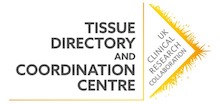Cadaveric Tissue for Research
It is well known that tissue donation from the living is vitally important to research and is normally in the form of small samples from “surplus to diagnostic” material or tumour biopsy. While this process allows many types of research to be undertaken, the research undertaken can be limited and so it is also necessary to conduct research on tissue donated from people after their death.
The ability to provide either large amounts or whole tumours of both primary cancer but also from where the tumour has spread (metastases) takes research to a different level. This access to these samples can provide information about whole organs or structures that are infiltrated by cancers. If consent is also given for the deceased to be examined both externally and internally by a Pathologist as well as researchers in the various fields, in many cases it helps contribute to not just a more in depth understanding on disease progression but how cancer can alter our physiology. Not all metastases or changes are detectable on scans, x-rays, and MRIs but are visible to the naked eye or microscope. By being able to explore these changes in detail down to a DNA/RNA level, it vastly increases our knowledge of not only how cancers develop but also what changes they cause to the human body. This, in turn, gives us the knowledge to further investigate the cancers and help create new diagnostic methods as well as treatment options, including surgical intervention.
For example, there have been changes over the last few years to the way colorectal cancer surgery has been performed, improving the patient’s life expectancy after the operation by helping to prevent some of the complications of radical pelvic surgery and by suggesting other options in some cases. Another example is how breast cancer research, especially metastatic breast cancer, is developing a better understanding of the disease by studying tissue samples from deceased donors. Breakthroughs like these would not and will not be possible currently or in the future without the generous donations of individuals after their death.
We also have a better understanding of how some tumours spread and why they spread to some organs and not others. Research has also been able to discover how tumours affect organs as well as the parts of the body they invade right down to an individual cell, which is again, providing valuable information for the early detection, treatment and in some cases prevention of certain metastatic diseases.
Donations after death are also extremely important for multiple other diseases or conditions affecting the brain (neurology) and bones and joints (orthopaedics). Neurology researchers who are able to study whole brains, spinal cords or nerves from persons who have suffered from Multiple Sclerosis, Parkinson Disease or Alzheimer Disease, are able to investigate different types of research that would be impossible on small samples. Similarly, orthopaedic researchers are able to study bones and joints in ways that previously they were unable to do so. This has led to development of improved spinal implants to repair damage caused by injury and diseases such as Osteoporosis and Rheumatoid Arthritis. Joint surgery has been developed by being able to move joints in a controlled manner and monitoring the results better, which is also improving the quality of life of persons of all ages.
